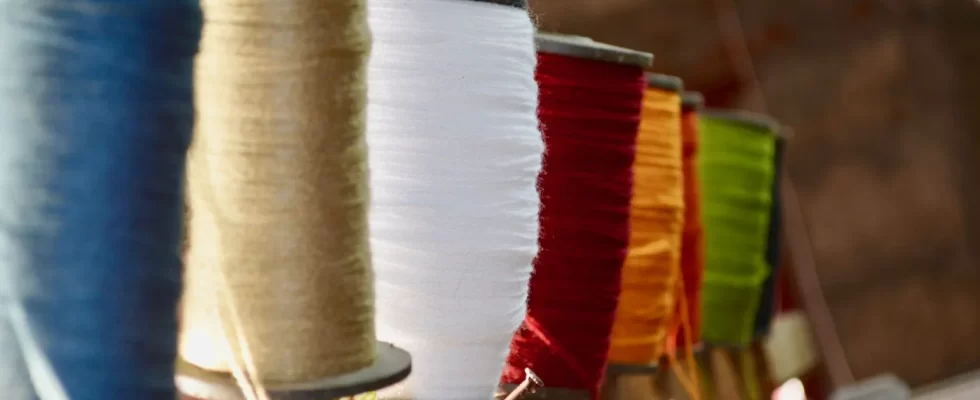When it comes to textile manufacturing, there is a lot that goes into making sure the process is done correctly. In order for a company to be successful in this industry, they need to have a clear understanding of the unwoven fabrics market.
This topic dives deep into that topic and more, providing an in-depth look at what goes into making this industry thrive.
You will gain a better understanding of the key factors that contribute to success in textile manufacturing. You will also learn about the challenges that companies face and how to overcome them.
By the end, you should have a good grasp on what it takes to be successful in the textile manufacturing industry.
The Importance of the Unwoven Fabrics Market
The unwoven fabrics market is critical to a number of industries and applications around the world. These versatile textiles have many unique properties that make them well-suited for a wide range of uses, from apparel and packaging to home decor and healthcare.
Furthermore, as markets continue to shift toward sustainable products, the need for sustainable materials like those found in the unwoven fabrics market will only grow over time.
Ultimately, then, it is clear that the unwoven fabrics market is not only important today, but will remain vital well into the future.
Key Factors for Success in Textile Manufacturing
There are a number of key factors that play an essential role in determining success in the textile industry.
First, it is critical to have an understanding of current trends and market demands, as well as a clear vision for product development.
In addition, manufacturers must be able to navigate the complex web of regulations regarding manufacturing practices, such as pollution standards and worker safety requirements.
Furthermore, good managerial skills and efficient production processes are also essential for success, as these will enable companies to keep their costs low and produce high-quality goods at scale.
Ultimately, if textile manufacturers can incorporate all of these key factors into their operations, they will be well positioned to succeed in this competitive industry.
Challenges Faced by Textile Manufacturing Companies
The textile industry has undergone significant changes in recent years, facing a number of challenges as it adapts to new technologies and consumer demands.
One major hurdle that many companies in this industry must overcome is rising competition from overseas manufacturers.
These businesses have lower labor costs and operate with fewer regulatory obligations, allowing them to produce textiles at lower prices than their competitors here in the United States.
Additionally, with the introduction of high-tech fabrics and eco-friendly manufacturing methods, consumers have come to expect more from textile companies than ever before.
To succeed in today’s market, companies must be willing to invest heavily in research and development, focusing on new materials and production processes that will enable them to stay ahead of the growing competition.
They must also find effective ways to connect with consumers, keeping up with shifting tastes through social media and other marketing channels.
Despite these challenges, however, there remains a strong demand for quality textiles produced by skilled workers here in the United States. C
Companies that are able to balance reliability with innovation will be the ones who ultimately succeed in this dynamic industry.
Overcoming Challenges in Textile Manufacturing
When it comes to manufacturing textiles, there can be many challenges that need to be overcome in order for the process to be successful.
For one thing, there are often a wide range of materials and techniques involved in textile production. Additionally, the materials themselves may have specific requirements or limitations that need to be considered when designing products.
Furthermore, the textile manufacturing process itself must be precise and controlled in order to achieve the desired results.
Despite these challenges, skilled professionals working in the field are typically able to manage them and produce high-quality textiles that meet consumer demands.
Whether it’s through careful planning, state-of-the-art technology, or simply a deep understanding of materials and processes, experienced textile manufacturers know how to navigate even the most complex challenges and emerge victorious.
With perseverance and determination, there is no limit to what this sector can achieve. Ultimately, that is why I strive every day to work at the forefront of this exciting industry.
Conclusion – What It Takes to be Successful in Textile Manufacturing
In order to be successful in textile manufacturing, it takes a combination of hard work, dedication, and creativity.
First and foremost, it requires a deep knowledge of the materials and processes involved in making textiles. This includes mastery of weaving techniques and an understanding of how each type of fabric is manufactured and dyed.
In addition, those in the textile industry need to be resourceful and innovative – constantly looking for new ways to improve the quality of their products and meet customer demands for innovation.
At the same time, success in this field also requires persistence and a willingness to go above and beyond what is expected.
Whether that means working long hours or innovating business practices, it takes real drive and determination to succeed in this competitive industry.
So if you’re looking for an exciting career in textiles that rewards hard work with great benefits and profit sharing, then this just might be the right path for you.


